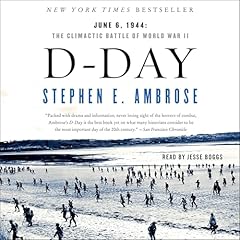
Denmark Vesey's Garden
Slavery and Memory in the Cradle of the Confederacy
No se pudo agregar al carrito
Add to Cart failed.
Error al Agregar a Lista de Deseos.
Error al eliminar de la lista de deseos.
Error al añadir a tu biblioteca
Error al seguir el podcast
Error al dejar de seguir el podcast
Obtén 3 meses por US$0.99 al mes
 Exclusivo para miembros Prime: ¿Nuevo en Audible? Obtén 2 audiolibros gratis con tu prueba.
Exclusivo para miembros Prime: ¿Nuevo en Audible? Obtén 2 audiolibros gratis con tu prueba.
Compra ahora por $25.79
-
Narrado por:
-
Tom Perkins
A book that strikes at the heart of the recent flare-ups over Confederate symbols in Charlottesville, New Orleans, and elsewhere, Denmark Vesey's Garden reveals the deep roots of these controversies and traces them to the heart of slavery in the United States: Charleston, South Carolina, where almost half of the US slave population stepped onto our shores, where the first shot at Fort Sumter began the Civil War, and where Dylann Roof shot nine people at Emanuel A.M.E. Church, the congregation of Denmark Vesey, a black revolutionary who plotted a massive slave insurrection in 1822.
As early as 1865, former slaveholders and their descendants began working to preserve a romanticized memory of the antebellum South. In contrast, former slaves, their descendants, and some white allies have worked to preserve an honest, unvarnished account of slavery as the cruel system it was.
Examining public rituals, controversial monuments, and whitewashed historical tourism, Denmark Vesey's Garden tracks these two rival memories from the Civil War all the way to contemporary times, where two segregated tourism industries still reflect these opposing impressions of the past, exposing a hidden dimension of America's deep racial divide.
©2018 Ethan J. Kytle and Blain Roberts (P)2018 HighBridge, a division of Recorded BooksLos oyentes también disfrutaron:




















One city’s story of America’s Original Sin
Se ha producido un error. Vuelve a intentarlo dentro de unos minutos.
The narrator has a great voice, and performed it well. However, Charleston has so many unique pronunciations the narrator got wrong. It should really be edited to correctly pronounce Huger, Maczyk, Clementa, Gaillard, Simons, Legare…and a few others I can’t remember.
Excellent history of slavery and reconstruction in Charleston, SC
Se ha producido un error. Vuelve a intentarlo dentro de unos minutos.
Not Just History - An Excellent Book!
Se ha producido un error. Vuelve a intentarlo dentro de unos minutos.
Timely, well-written and enlightening.
Se ha producido un error. Vuelve a intentarlo dentro de unos minutos.
Not What I Expected!
Se ha producido un error. Vuelve a intentarlo dentro de unos minutos.


